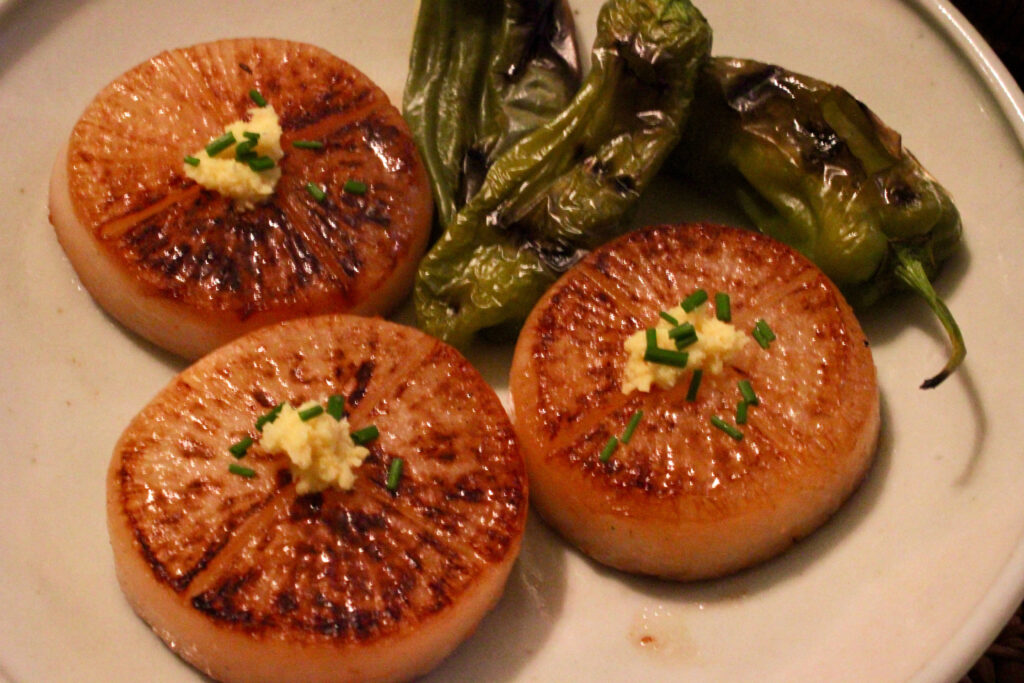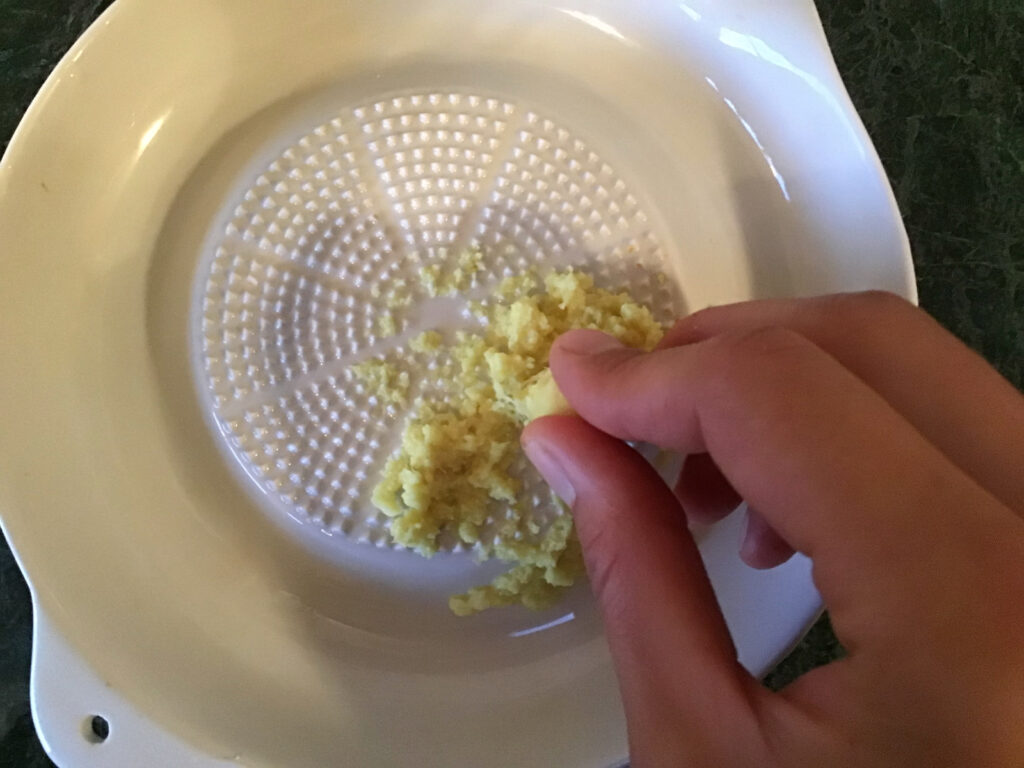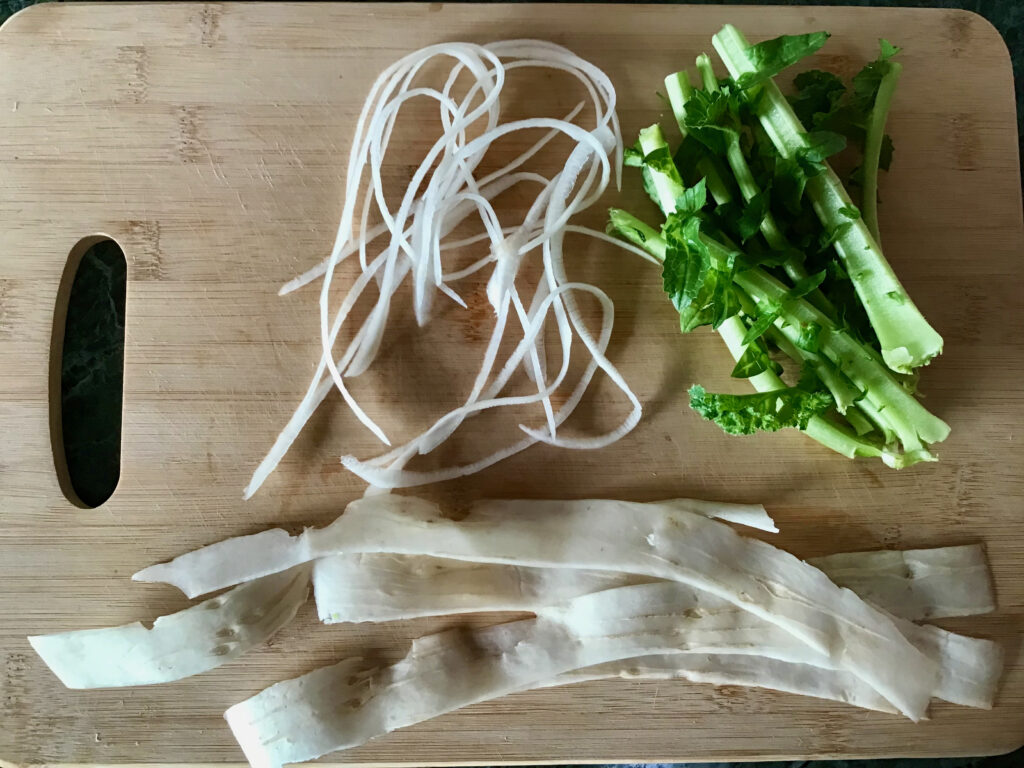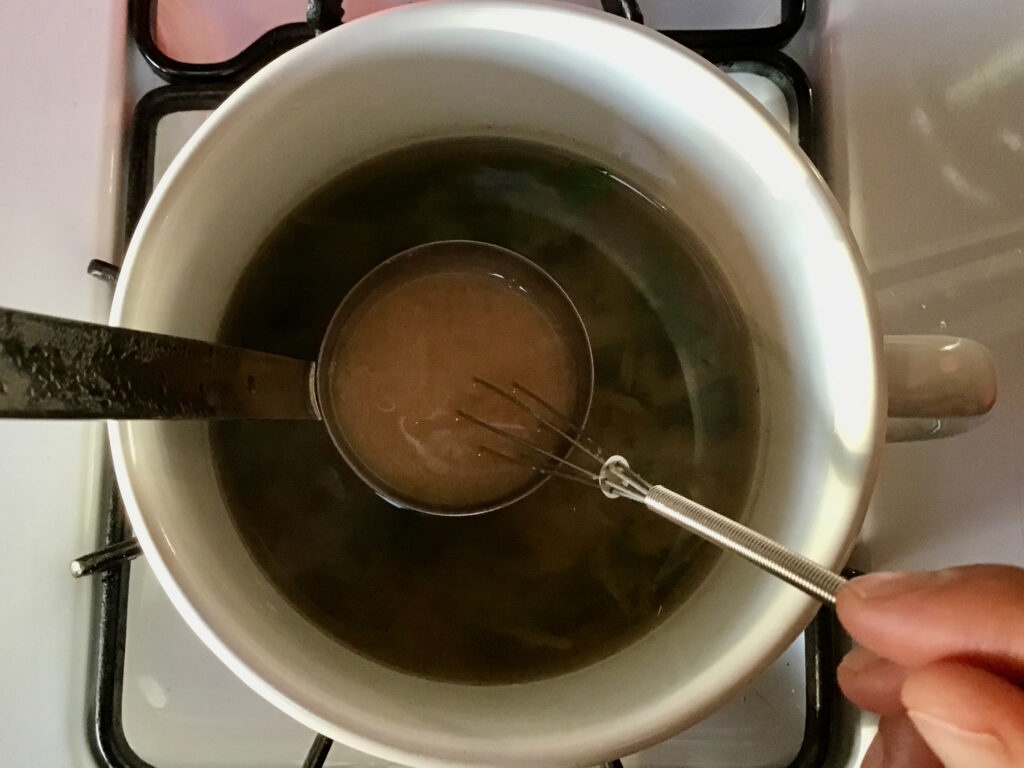The Daikon season has arrived! I saw the first daikon of the year at the farmers market. It makes me realize the deepening of the autumn season. In the colder season, daikon is one of the vegetables that is eaten by Japanese people very often.
Furofuki Daikon, where daikon is cooked with the Kombu broth until it becomes so tender that it melts in your mouth, is definitely one of the most famous daikon dishes in Japan. Also, this vegetable appears very often in Nabe dishes, which are various kinds of hot pot dishes—a classic and regular appearance on the dining table during the winter season.
Today, I was inspired to make two different daikon recipes for our dinner. One is daikon steak, which is beautifully juicy and flavorful! Since daikon has quite a neutral flavor and lightness with its high water content, frying it as steak can bring more richness and flavor.
Another dish is the daikon miso soup. Like carrots or beets, daikon is another wonderful vegetable which you can cook all parts of. The leaves of daikon are very nutritional as well as delicious, and it is perfect for miso soup.
As a side of daikon steak, I was inspired to add some colorful vegetable dish that would complement its flavor. It was perfect that the Shishito peppers, which is one of the beautiful Japanese summer vegetables, were still on the market. Their bitterness and bright beautiful green color will add a wonderful accent to the flavor.
And, to have some raw vegetable salad as well as protein with different kinds of taste experience, I decided to make a finely shredded carrot salad, seasoned with ume plum vinegar, along with some grilled tempeh.
Today’s Menu
- Brown rice (Click here to learn how to cook delicious brown rice.)
- Daikon miso soup (Basic recipe for miso soup here)
- Daikon steak
- Grilled shishito peppers
- Carrot salad with grilled tempeh
- Fermented celery pickles

Daikon—four different deliciousnesses
Look at this beauty! Daikon is a root vegetable that has various flavors in one vegetable. In fact, you can divide it into four different parts and each of them has different characteristics.
The first part is the leaves. I wished that this daikon’s leaves were not so much cut, in fact, as the leaves of daikon are very nutritional. They are high in Vitamin C, A, as well as iron, potassium, and calcium. We usually eat them separately from the fruit of the daikon, making a sauté dish or miso soup.
Next, you can divide the daikon fruit into three different parts—top, middle, and bottom. To the top, the flavor becomes sweeter and the water content increases. To the bottom, the flavor become more spicy and the water content decreases.
The top part of daikon, due to its high water content and sweetness, is beautiful to eat raw. Cutting it finely like Julienne carrot and making salad is a wonderful way to appreciate it. Also, you can make vegetable sticks and enjoy with dip.
The middle part of daikon is soft and has good balance between the sweetness and spiciness. This part is perfect for cooking for Furofuki Daikon, Nabe dishes, or also the daikon steak that I made today.
The bottom part of daikon has less water content and it could sometimes be very spicy! Japanese people enjoy grating this part and adding it as a garnish for cold soba, grilled fish, or other dishes. Also, this part is very good for making the fermented pickles with.
Daikon—health benefits
Daikon is very low in calories and has a good amount of fiber. The fruit’s part includes a good amount of Vitamin C, copper, and folate. For me, from an Eastern perspective, this is one of the vegetables that represents white colored vegetables that are very good for the health of our lungs as well as large intestine. Daikon is a great support for our respiratory as well as digestive health.
And as I have already mentioned, the daikon leaves are packed with nutrition. Especially if you are on a vegan diet, this part of the vegetable could become one of the great sources of calcium for you.

Daikon steak
The process of making it is fairly simple. One thing to be aware of is how hard this vegetable is. Unless you cut it into thin slices, it will take a long time for the daikon to get softer. Therefore, to make daikon steak, the first step you need to take is cooking the sliced daikon with broth well enough so that the texture already becomes tender. Many people in Japan do this process by placing the daikon on the plate, covering it with plastic wrap, and heating in the microwave. But since I don’t use a microwave, I will write here the traditional way to cook daikon in a pot.
- Cut the middle part of the daikon in about 1 inch thickness. Peel the skin as well as cut the edges with the peeler as shown in the picture. You can save the peels and edges for the miso soup.
- Engrave cross cuts onto both surfaces.
- Place the slices of daikon in a pot. Pour enough kombu or kombu-shiitake broth into the pot so that about a third of the daikon gets covered. (To learn more about basic Japanese broth, read the article “Preparing Japanese Broths.”)
- Turn the heat to high until it comes to a boil, then turn the heat down to medium low and cook for about ten minutes. Then turn the slices and cook the other side until the daikon gets tender enough. (If you are not using a cast iron pot like I am, which has a heavy lid and seals well, the broth might gradually evaporate. In such a case, add some more broth once the level gets lower.)
- Meanwhile, have about 2 tsp grated of fresh ginger.
- Once they are cooked, prepare the sauce. In a small bowl, add 1 tbsp of soy sauce, 1 tbsp of sake, and 2 tbsp of broth you cooked the daikon with. If you don’t have sake, you can substitute with another tbsp of broth.
- Heat the pan to medium high and pour in the oil. Place daikon and sauté one side well until the surface becomes beautifully brown. Then turn and sauté the other side. When both sides are beautifully colored, turn the heat off and pour in the sauce. Once the side merges well with the sauce, flip the slices and allow the other side also to merge with the sauce.
- Serve on the plate and place the grated ginger on top. I also used chives as another garnish, but you can also use the green part of spring onion finely chopped.
Daikon miso soup
If I were in Japan, I would have certainly put abura-age (deep fried thinly sliced tofu) together with the daikon in the soup. But even without it, this soup will be lovely. You can enjoy the beautiful flavor of daikon leaves.
- Heat a pot with kombu broth or kombu-shiitake broth.
- Meanwhile, cut the daikon leaves as well as the peels and edges of the daikon from the daikon steak.
- Once the broth is boiled, put the daikon leaves, peels, and edges into the pot and boil until becoming soft and tender.
- Turn off the heat and blend the broth with miso.
- Re-heat the soup at low heat so that it won’t boil.
Carrot salad with grilled tempeh & grilled shishito peppers
I love carrot salad where you grate the carrot with the finer grating blade. The texture is very delicate and it blends so well with any dressing you use. Today, I mixed the grated carrot with ume plum vinegar, then added ground toasted sesame. When you grind the sesame seeds, they become even more fragrant. Also, the nutrition can be absorbed better in the body. If you don’t have any tool for grinding the seeds, you can use whole toasted sesame seeds and it will still be a wonderful salad.
I grilled the tempeh together with Shishito peppers on the cast iron grill pan. If you don’t have such a pan, you can simply heat them up on the frying pan.
I didn’t season the tempeh because we ate the carrot salad on top of the grilled tempeh pieces. What a delicious combination! The marriage of juicy carrot salad, the fresh flavor of ume plum vinegar, and the fragrant aroma of sesame seeds was almost like a delicious sauce for the tempeh.






















